Madhya Pradesh at a Glance- Culture, Economy, Symbols, Geography, Tourism, Politics and Demography of Madhya Pradesh
1. GENERAL INFORMATION ABOUT MADHYA PRADESH
- Madhya Pradesh was established on November 01, 1956. It is the second largest Indian state by area after Rajasthan and the fifth largest state by population.
- It is a state in central India.
- The capital of Madhya Pradesh is Bhopal city.
- The largest city of Madhya Pradesh is Indore.
- As its name implies—Madhya means “central” and Pradesh means “region” or “state”—it is situated in the heart of the country.
- States sharing borders with Madhya Pradesh - Uttar Pradesh (northeast), Chattisgarh (southeast), Maharashtra (south), Gujarat (west), and Rajashthan (northwest)
- Its topography is defined by Narmada Sone Valley.
- Chhattisgarh was carved out of Madhya Pradesh on 1 November 2000.
- At present Madhya Pradesh consists of 10 divisions and 52 districts.
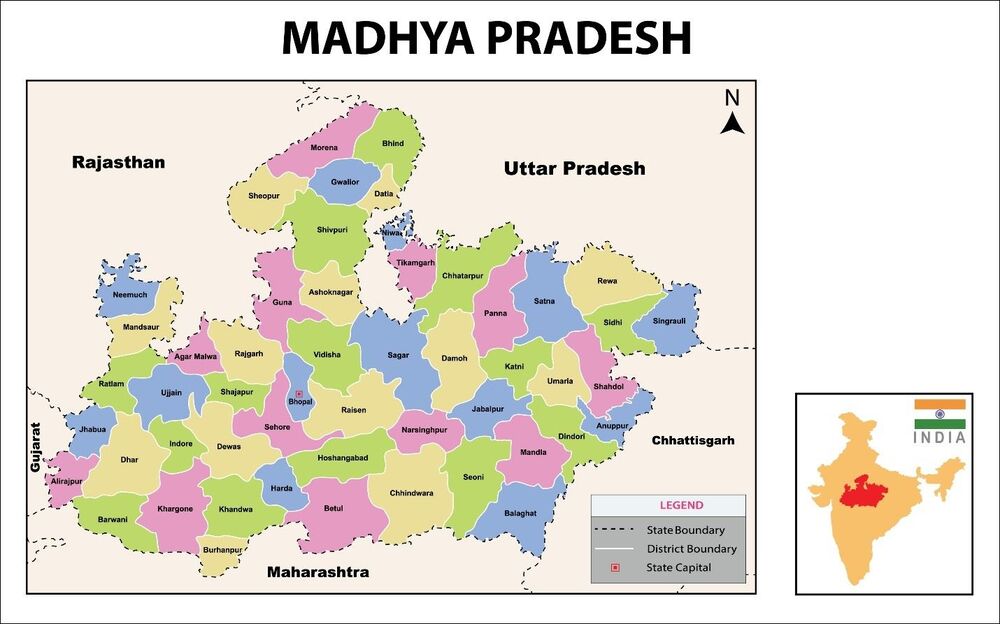
STATE SYMBOLS OF MADHYA PRADESH
| Madhya Pradesh State Symbols | Name of Madhya Pradesh State Symbols | Madhya Pradesh State Symbol images |
| State Flower of Madhya Pradesh | Parrot Tree (Butea monosperma) |
|
| State Animal of Madhya Pradesh | Swamp Deer (Barasingha) |
|
| State Tree of Madhya Pradesh | India Banyan (Ficus benghlensis) |
|
| State Bird of Madhya Pradesh | Dhudraj, the Asian paradise flycatcher (Terpsiphone paradise) |
|
| State Sport of Madhya Pradesh | Malkhamb |
|
| State Fish of Madhya Pradesh | Mahasheer |
|
| State Emblem |
|
|
2. GEOGRAPHY OF MADHYA PRADESH
Madhya Pradesh is geographically bounded by the Ganga-Yamuna plains, the Aravali, Chhattisgarh plain and Tapti valley and plateau of Maharashtra in the north, west, east and south directions, respectively.
CLIMATE AND SOIL
Climate:
- The climate in Madhya Pradesh is subtropical.
- The temperature in the entire state ranges above 29.4°C. Temperature of above 42°C is recorded during the month of May in regions like Gwalior, Morena and Datia.
- Mandla, Balaghat, Sidhi, Jabalpur and other extreme eastern parts receive more than 150 cm rainfall. The districts of western Madhya Pradesh receive less than 80 cm rainfall.
- The annual rainfall ranges from 800mm to 1800 mm and the average annual temperature varies from 22 to 25 degrees Celsius.
Seasons of Madhya Pradesh
- Summer - March- June
- Winter - November-February
- Southwest Monsoon - June-September
Soils:
Five major types of soil are found in Madhya Pradesh:
| Soil type | Features |
| Black soil |
|
| Alluvial Soil
|
|
| Mixed soil
|
|
| Kachari Soil |
|
| Red-yellow soil
|
|
RIVERS, LAKES AND WATERFALLS
- Madhya Pradesh has the source of some of the most important rivers of India. These are Narmada (Shahdol district), Tapti (Betul District), Mahi (Dhar district), Godawari (Wainganga - Balaghat District).
- The State also provides water to Ganga and Yamuna through Chambal, Sindh, Betwa, Kuanwari-Sindh and Son, Rihand & Ken rivers and Godawari river basin through Wain Ganga (Pranhita) rivers.
- The Chambal forms the state’s northern border with Rajasthan and Uttar Pradesh.
- Narmada is the largest river in Madhya Pradesh.
Lakes in Madhya Pradesh
Bhopal is nicknamed as “City of Lakes”.
| Lakes | Location |
| Bhojtal | Bhopal Bhojtal and Lower Lake together form Bhoj Wetlands which is one of the Ramsar Sites in India. |
| Lower Lake | |
| Moti Lake | |
| Sharangpani Lake | |
| Tawa Reservoir | Hoshangabad |
| Shahpura lake | Bhopal |
| Sakhya Sagar lake | Shivpuri |
Waterfalls in Madhya Pradesh
- Raneh Waterfall, near Khajuraho
- Dhuandhar Waterfalls, Jabalpur
- Keoti falls, near Rewa
- Tincha falls, Indore
- Patalpani falls, Indore
- Kapildhara waterfalls, Amarkantak
- Mandhar and Dardi falls in Omkareshwar
- Pandav falls, Panna
- Chuliya falls, Mandsaur
- Bahuti Falls, Rewa- Highest waterfall in Madhya Pradesh
- Chachai Falls
NATIONAL PARK AND WILDLIFE SANCTUARY MADHYA PRADESH
- Madhya Pradesh has maximum number of national parks i.e. 11 followed by Assam (7).
- Kanha National Park, in the southeastern part of the state, is famous for the barasingha. Bandhavgarh National Park, in the east, is famous for the endangered white tiger.
- There are 25 Wildlife Sanctuaries in Madhya Pradesh.
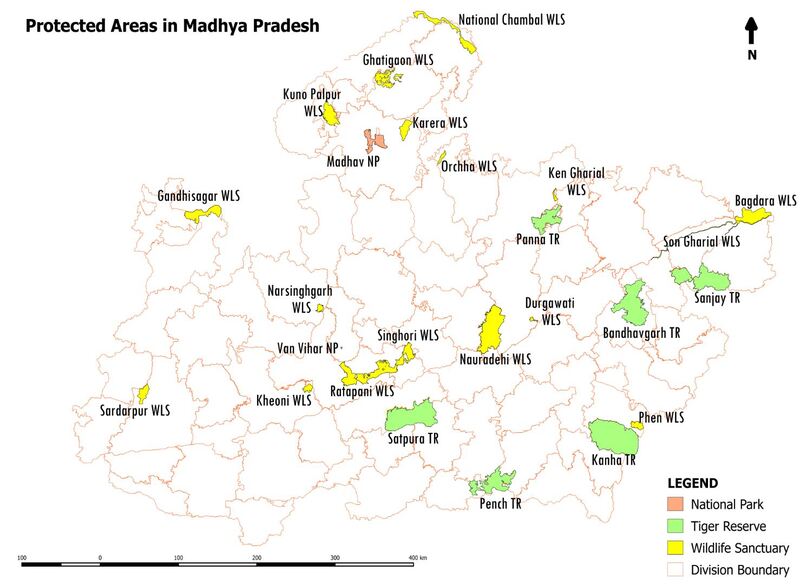
(Source: Madhya Pradesh Forest Department)
List of National Parks in Madhya Pradesh (11)
- Bandhavgarh National Park
- Kanha National Park
- Satpura National Park
- Sanjay National Park
- Madhav National Park
- Van Vihar National Park
- Mandla Plant Fossils National Park
- Panna National Park
- Pench National Park
- White Tiger Safari & Zoo, Mukundpur
- National Chambal Sanctuary
List of Wildlife Sanctuaries in Madhya Pradesh
| Bori | Bagdara |
| Phen | Ghatigaon |
| Gandhisagar | Karera |
| Ken Ghariyal | Kheoni |
| Narsinghgarh | National Chambal |
| Nouradehi | Pachmari |
| Panpatha | Kuno Palpur |
| Pench Mowgli | Ratapani |
| Sanjay Dubri | Singhori |
| Son Ghariyal | Sardarpur |
| Sailana | Ralamandal |
| Orchha | Gangau |
| Vir Durgawati |
|
3. ECONOMY OF MADHYA PRADESH
Primarily, MP has an agricultural and pastoral economy.
Major Crops grown in Madhya Pradesh are Wheat, Soybean, Paddy, Coarse millets, Jowar (Sorghum), Pulses, Cereals and Groundnut. Sugarcane, Cotton, and Oil Seeds are some of the cash crops grown in Madhya Pradesh.
The largest opium producing district in India is Mandsaur, located in Madhya Pradesh.
Advanced Districts like Indore, Bhopal, Gwalior and Jabalpur have seen industrial development.
NATURAL RESOURCES AND MINERALS IN MADHYA PRADESH
In terms of mineral production in India, Jharkhand tops followed by Chhattisgarh and Madhya Pradesh. Malajkhand in Madhya Pradesh has the largest Open Cast Copper mine in India.
Madhya Pradesh contains 7.71% of the total coal reserve of the country.
As per Indian Minerals Yearbook 2019, Diamond is only produced in the State of Madhya Pradesh. Also, the leading producer of copper conc., manganese ore, diaspore, pyrophyllite, limestone and clay (others) is Madhya Pradesh.
Important mineral occurrences in the State are:
- Bauxite in Balaghat, Guna, Jabalpur, Katni, Mandla, Rewa, Satna, Shahdol, Shivpuri, Sidhi & Vidisha districts;
- Calcite in Barwani, Jhabua, Khandwa & Khargone districts;
- China clay in Betul, Chhatarpur, Chhindwara, Gwalior, Hoshangabad, Jabalpur, Khargone, Narsinghpur, Raisen, Satna, Shahdol & Sidhi districts;
- Copper in Balaghat, Betul & Jabalpur districts;
- Coal in Betul, Shahdol & Sidhi districts;
- Diamond in Panna district;
- Diaspore & pyrophyllite in Chhatarpur, Shivpuri & Tikamgarh districts;
- Dolomite in Balaghat, Chhindwara, Damoh, Dewas, Harda, Hoshangabad, Jabalpur, Jhabua, Katni, Mandla, Narsinghpur, Sagar & Seoni districts;
- Fireclay in Betul, Chhindwara, Jabalpur, Katni, Narsinghpur, Panna, Sagar, Shahdol & Sidhi districts;
- Iron ore (haematite) in Betul, Gwalior, Jabalpur & Katni districts;
- Limestone in Balaghat, Chhindwara, Damoh, Dhar, Hoshangabad, Jabalpur, Jhabua, Khargone, Katni, Mandsaur, Morena, Narsinghpur, Neemach, Rewa, Sagar, Satna, Sehore, Shahdol & Sidhi districts;
- Manganese ore in Balaghat and Jhabua districts;
- Ochre in Dhar, Gwalior, Jabalpur, Katni, Mandla, Rewa, Satna, Shahdol & Umaria districts;
- Pyrophyllite in Chhatarpur, Sagar, Shivpuri & Tikamgarh districts;
- Wuartz/silica sand in Balaghat, Dewas, Dhar, Jabalpur, Khandwa, Khargone, Morena, Rewa & Shahdol districts;
- Yalc/steatite/soapstone in Dhar, Jabalpur, Jhabua, Katni, Narsinghpur & Sagar districts and vermiculite in Jhabua district.
FOREST AND WILDLIFE
- As per India State of Forest Report 2019, Madhya Pradesh is a forest rich State and is ranked first among the States in terms of the Recorded Forest Area (RFA) which is 94,689 sq. km.
- The State has a sizeable tribal and rural population which is dependent on the forests for their livelihood and basic needs.
- There are 6 Tiger Reserves in the State covering an area of 6117.26 sq km. Eco-sensitive zones have been declared for 19 protected areas. The State with a population of 526 Tigers, is recognized as Tiger State of India, as per the 'All India Tiger Estimation 2018'.
- The eastern districts of Balaghat, Mandla, Shahdol, Sidhi have dense forest cover. The abundantly found trees include Teak, Sal, Bamboo and Tendu.
4. KEY STATISTICS OF MADHYA PRADESH –CENSUS 2011
- Madhya Pradesh occupies an area of 3,08,252 square km. Chhindwara is the largest district of MP in terms of area while Datiya is the smallest district.
- Madhya Pradesh has population of 7.27 crores of which male and female are 37,612,306 and 35,014,503 respectively.
- Indore has the maximum population while Harda has minimum population.
- Sex Ratio – 931 females per 1000 males (Highest sex ration in Balaghat district)
- Total Literacy rate- 69.32%, Female literacy- 59.24%, Male Literacy- 78.73%
- More than 75% of the population of Madhya Pradesh resides in villages whose main occupation is agriculture.
- The tribes of Madhya Pradesh constitute over one-fifth of the state's population and are mainly concentrated in southern southwestern and eastern parts of the state.
- Among these most prominent tribes are the Bhil, Baiga, Gond, Korku, Kol, Kamar, and Maria.
- Bhil, the second largest tribe, is largely concentrated in areas around Jhabua, Khargone, Dhar and Ratlam.
- Malwi, Bundeli, Bagheli, Nimari are the commonly spoken regional dialects.
- Most of the people are Hindus.
- There are, however, significant minorities population of Muslims, Jains, Christians, and Buddhists also a small Sikh population.
5. POLITY OF MADHYA PRADESH
- The head of state is the governor, who is appointed by the President of India.
- The first Governor of Madhya Pradesh was Shri B. P. Sitaramaiya.
- The governor is aided and advised by the Council of Ministers, which is headed by a Chief Minister and is responsible to the elected, unicameral Legislative Assembly (VidhanSabha-230 seats).
- The collector exercises both executive and magisterial power.
- Hindi is the official language of Madhya Pradesh.
- The High court of Madhya Pradesh is located in Jabalpur.
- There are 29 Lok Sabha seats and 11 Rajya Sabha seats in Madhya Pradesh.
| Governor of Madhya Pradesh | Mangubhai C Patel |
| Chief Minister of Madhya Pradesh | Shivraj Singh Chauhan |
| Speaker | Girish Gautam |
| Chief Justice of High Court | Ravi Malimath |
List of Chief Ministers of Madhya Pradesh
| Chief Ministers | From | To |
| Shivraj Singh Chauhan | 23 March 2020 | Present |
| Kamal Nath | 18 Dec 2018 | 23 March 2020 |
| Shivraj Singh Chauhan | 14 Dec 2013 | 17 Dec 2018 |
| Shivraj Singh Chauhan | 13 Dec 2008 | 13 Dec 2013 |
| Shivraj Singh Chauhan | 29 Nov 2005 | 12 Dec 2008 |
| Babulal Gaur | 23 Aug 2004 | 29 Nov 2005 |
| Uma Bharti | 08 Dec 2003 | 23 Aug 2004 |
| Digvijay Singh | 01 Dec 1998 | 08 Dec 2003 |
| Digvijay Singh | 07 Dec 1993 | 01 Dec 1998 |
| President's rule | 16 Dec 1992 | 06 Dec 1993 |
| Sunderlal Patwa | 05 Mar 1990 | 15 Dec 1992 |
| Shyama Charan Shukla | 09 Dec 1989 | 04 Mar 1990 |
| Motilal Vora | 25 Jan 1989 | 08 Dec 1989 |
| Arjun Singh | 14 Feb 1988 | 24 Jan 1989 |
| Motilal Vora | 13 Mar 1985 | 13 Feb 1988 |
| Arjun Singh | 11 Mar 1985 | 12 Mar 1985 |
| Arjun Singh | 08 Jun 1980 | 10 Mar 1985 |
| President's rule | 18 Feb 1980 | 08 Jun 1980 |
| Sunderlal Patwa | 20 Jan 1980 | 17 Feb 1980 |
| Virendra Kumar Saklecha | 18 Jan 1978 | 19 Jan 1980 |
| Kailash Chandra Joshi | 26 Jun 1977 | 17 Jan 1978 |
| President's rule | 29 Apr 1977 | 25 Jun 1977 |
| Shyama Charan Shukla | 23 Dec 1975 | 29 Apr 1977 |
| Prakash Chandra Sethi | 23 Mar 1972 | 22 Dec 1975 |
| Prakash Chandra Sethi | 29 Jan 1972 | 22 Mar 1972 |
| Shyama Charan Shukla | 26 Mar 1969 | 28 Jan 1972 |
| Raja Nareshchandra Singh | 13 Mar 1969 | 25 Mar 1969 |
| Govind Narayan Singh | 30 Jul 1967 | 12 Mar 1969 |
| Dwarka Prasad Mishra | 09 Mar 1967 | 29 Jul 1967 |
| Dwarka Prasad Mishra | 30 Sep 1963 | 08 Mar 1967 |
| Bhagwantrao Mandloi | 12 Mar 1962 | 29 Sep 1963 |
| Kailash Nath Katju | 14 Mar 1957 | 11 Mar 1962 |
| Kailash Nath Katju | 31 Jan 1957 | 14 Mar 1957 |
| Bhagwantrao Mandloi | 01 Jan 1957 | 30 Jan 1957 |
| Pt. Ravishankar Shukla | 01 Nov 1956 | 31 Dec 1956 |
List of Governors of Madhya Pradesh
| S. No | Governor | From | To |
| 1 | Dr. Pattabhi Sitaramayya | 1 November 1956 | 13 June 1957 |
| 2 | Hari Vinayak Pataskar | 14 June 1957 | 10 February 1965 |
| 3 | K. Chengalaraya Reddy | 11 February 1965 | 2 February 1966 |
| - | P. V. Dixit (acting) | 2 February 1966 | 9 February 1966 |
| (3) | K. Chengalaraya Reddy | 10 February 1966 | 7 March 1971 |
| 4 | Satya Narayan Sinha | 8 March 1971 | 13 October 1977 |
| 5 | N. N. Wanchu | 14 October 1977 | 16 August 1978 |
| 6 | C. M. Poonacha | 17 August 1978 | 29 April 1980 |
| 7 | B. D. Sharma | 30 April 1980 | 25 May 1981 |
| - | G. P. Singh (acting) | 26 May 1981 | 9 July 1981 |
| (7) | B. D. Sharma | 10 July 1981 | 20 September 1983 |
| - | G. P. Singh (acting) | 21 September 1983 | 7 October 1983 |
| (7) | B. D. Sharma | 8 October 1983 | 14 May 1984 |
| 8 | Prof. K.M Chandy | 15 May 1984 | 30 November 1987 |
| - | Narayan Dutta Ojha (acting) | 1 December 1987 | 29 December 1987 |
| (8) | Prof. K.M Chandy | 30 December 1987 | 30 March 1989 |
| 9 | Sarla Grewal | 31 March 1989 | 5 February 1990 |
| 10 | M. A. Khan | 6 February 1990 | 23 June 1993 |
| 11 | Mohammad Shafi Qureshi | 24 June 1993 | 21 April 1998 |
| 12 | Bhai Mahavir | 22 April 1998 | 6 May 2003 |
| 13 | Ram Prakash Gupta | 7 May 2003 | 1 May 2004 |
| - | Lt. Gen. Krishna Mohan Seth (acting) | 2 May 2004 | 29 June 2004 |
| 14 | Balram Jakhar | 30 June 2004 | 29 June 2009 |
| 15 | Rameshwar Thakur | 30 June 2009 | 7 September 2011 |
| 16 | Ram Naresh Yadav | 8 September 2011 | 7 September 2016 |
| — | Om Prakash Kohli (additional charge) | 8 September 2016 | 23 January 2018 |
| 17 | Anandiben Patel | 23 January 2018 | 29 July 2019 |
| 18 | Lalji Tandon | 29 July 2019 | 30 June 2020 |
| — | Anandiben Patel (additional charge) | 30 June 2020 | 8 July 2021 |
| 19 | Mangubhai C. Patel | 8 July 2021 | Incumbent |
6. CULTURE OF MADHYA PRADESH
Madhya Pradesh is a culturally diverse state. Music and Dance of Madhya Pradesh represent its culture and traditions.
FESTIVALS AND FAIRS
- The Khajuraho Dance Festival is organised by the Madhya Pradesh Kala Parishad annually. It is based on the Indian classical dance tradition.
- Allauddin Khan Sangeet Samaroh, also known as Maihar Festival, is an ode to music maestro Ustad Allauddin Khan.
- Tribal Food Festival
- Mandu Festival- Adventure and water sports along with cultural programme
- Tansen Samaroh- World Music Festival
- Khajuraho International Film Festival
- Jal Mahotsav
MUSIC AND DANCE
- Two famous singers of medieval India- Tansen and Baiju Bawra- were born near Gwalior.
- Some of the famous folk dances of Madhya Pradesh are Mataki, Jawara, Rai, Karma, Saila, Gangaur, Badhai, Baredi, Naurata, Ahiri and Bhagoria.
- MP is home to four gharanas of Hindustani classical music—Maihargharana, Gwalior gharana, Seniagharana and Indore gharana.
- Pai songs are sung, accompanied by the saira dance, during the rainy season.
- The local styles of folk singing include Faga, Bhartahari, Sanja geet, Bhopa, Kalbelia, Bhat/Bhand/Charan, Vasdeva, Videsia, Kalgi Turra, Nirgunia, Alha, Pandwani Gayan and Garba Garbi Govalan.
ART AND CRAFT OF MADHYA PRADESH
Some of the unique art and handicraft of Madhya Pradesh are as follows:
- Patangarh’s Gond Paintings
- Batik Print
- Zari Zardozi
- Durrie Weaving
- Bead Jwellery making
- Batto Bai Dolls
- Bhil or Pithora Paintings
- Nandna block Print
- Bagh painting
- Mandana Art
- Natural Wooden Sculptures
- Maheshwari Sarees weaving
- Marble Art of Bhedaghat
- Papier Mache of Ujjain
TOURISM
- From natural wonders like waterfalls, lakes, forests and caves to man-made wonders such as temples, forts and dams, Madhya Pradesh has various places to visit.
- Some of the famous tourist destinations in Madhya Pradesh are:
- Ram Raja Temple, Laxmi Narayan Temple, Orchha Wildlife Sanctuary, Chaturbhuj Temple, Orchha Fort- Orchha
- Tilwara Ghat- Jabalpur
- Gurudwara Data Bandi Chhor- Gwalior
- Kal Bhairav Temple- Ujjain
- Khajurao Temples- Khajurao
- Sanchi- land of Stupas
- Jai Vilas Mahal
- Gwalior Fort
- Amarkantak- Teerthraj
- Omkareshwar- Mini Varanasi- Located on the confluence of Narmada and Kaveri river
- Maheshwar- temple town of Madhya Pradesh
- Tiger Reserves in Madhya Pradesh
- Bhimbetka Caves
- Madan Mahal Fort, Bargi Dam, Chausath Yogini Temple, Sangram Sagar Lake- Jabalpur
- Jahaz Mahal, Hindola Mahal, Rani Roopmati Pavillion, Jami Masjid, Bagh Caves- Mandu
Three sites in Madhya Pradesh have been declared World Heritage Sites by UNESCO:
- The Khajuraho Group of Monuments (1986)
- Buddhist Monuments at Sanchi (1989)
- The Rock Shelters of Bhimbetka (2003)
7. FAMOUS PERSONALITIES OF MADHYA PRADESH
- Lata Mangeshkar and Asha Bhonsle- Singer
- Aadesh Srivastava- Singer and Composer
- Rahat Indori- Lyricist and Urdu poet
- Dr. Bhimrao Ambedkar- Lawyer and Social Activist
- Pandit KrishanRao Shankar- Musician (Gwalior Gharana)
- Ustad Amir Khan- Singer
- Ashok Kumar- Actor
- Kishore Kumar- Singer and Actor
- Javed Akhtar- Poet, Screenwriter
- Jaya Bacchan- Actress and MP
- Raghuram Rajan- Economist
- Shankar Dayal Sharma- 9th President of India
- Atal Bihari Vajpayee- 10th PM of India
- Kailash Sathyarthi- Social Activist
- Kartik Aryan- Actor
- Vijaya Raje Scindia and Madhav Rao Scindia
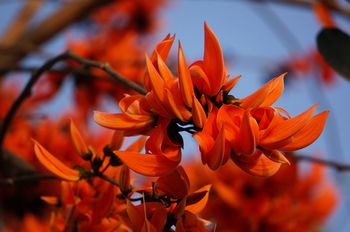
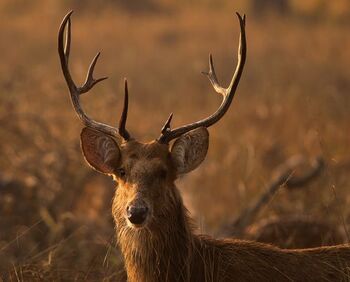
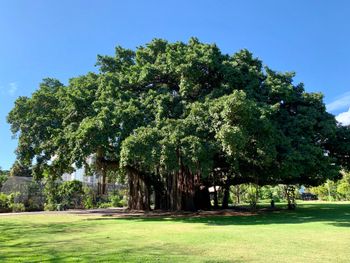
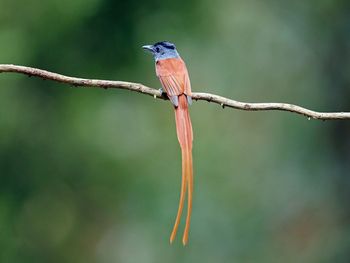
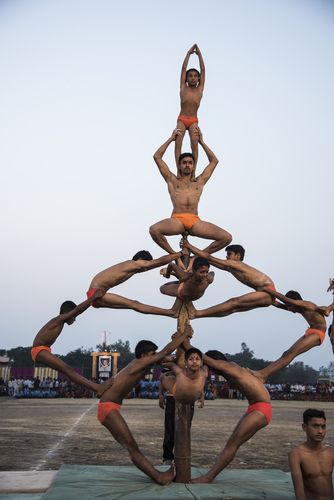
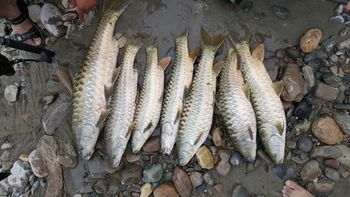
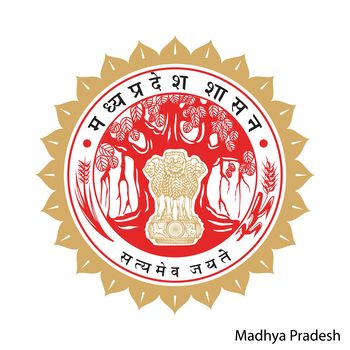




 Latest
Latest 



Comments